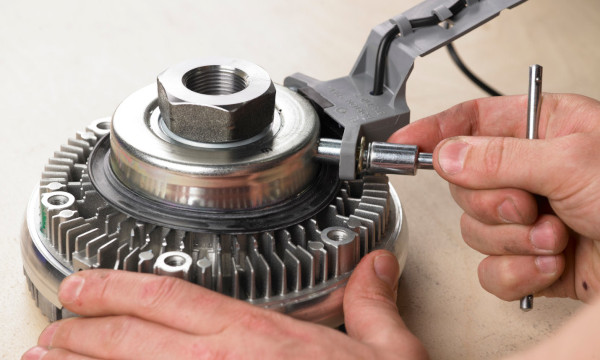Fan Clutch Symptoms of a Locked-in Fan Clutch
No one enjoys a vehicle or application breaking down: No one. Equally frustrating is diagnosing the fault. This is true, especially if the fault is in the engine cooling system and you’re unsure the fan clutch symptoms to look for.
When it happens it’s especially hard to take when you need your vehicle or application to finish a job. It’s even more annoying if you don’t know what role the fan clutch plays as part of the engine cooling system in your engine! We’re kidding of course. By landing on this page, we’re guessing you know exactly what one does: This is what a fan clutch does, if you’re unsure.
If you suspect the problem is a locked-in fan coupling, but don’t know what fan clutch symptoms to look for, then you’re in the right place.
As fan clutch specialists, we’ve seen plenty of faulty viscous drives in our time. Like any other part, fan clutches can develop issues that, if left unchecked, can be both devastating and costly.
From the exterior, a locked-in fan clutch will be hard to diagnose with just a visual check. This is because the clutch will seem to be in perfect working order, as the fault is on the inside. Luckily, there are a few symptoms you can look for to diagnose whether the fault is a seized fan clutch or not.
Locked-in fan clutch symptoms.
- The fan fault is logged in your engine management system. A bit obvious, but make sure to check the engine management system on your vehicle before anything else.
- A noisy, constant droning noise from the fan. A locked-in, or seized, fan clutch can cause radiator fans to fully engage at all speeds. Therefore, you could experience a constant droning noise from the fan at a higher volume than usual. You might notice more dust being blown from under the vehicle than normal when idling. This is another indication of a fully engaged radiator fan.
- Engine seems to ‘roar’ when you set off in first gear. In short, this shouldn’t be happening. In low gears, especially at start-up, the fan should not be engaging fully. If you’re noticing a tell-tale ‘roar’, then you could potentially be looking at a locked-in fan clutch.
- Using more fuel than normal. Yes, you’ve guessed it. A locked-in fan clutch will cause the radiator fan to be fully engaged. This results in extra strain on the engine and, therefore, your vehicle will consume more power and fuel.
Things to check.
So, you’ve noticed some, or all, of the symptoms above and think a possible culprit could be a locked-in fan clutch. Now what?
Firstly, check to make sure something hasn’t gotten caught or wrapped up around the back of the viscous fan clutch. It is possible something like a plastic bag could have got wound up where the shaft goes in to the bearing. When this happens, many of the symptoms described above can be experienced. As a result, you may think that your fan clutch has seized.
Secondly, if your viscous fan hub is electronically controlled, check if the wire is unplugged or damaged. Most truck fan clutches will ‘fail-safe’ in this instance (i.e. will continue at full speed if the electrical circuit is faulty).
In summary.
The fan clutch is integral to the safe and efficient operation of your commercial vehicle or application engine. When a fan clutch seizes, the engine is put at considerable risk from overheating, or over-cooling, and the damage done can be catastrophic if left alone.
A locked-in fan clutch can experience increased vibrations that will pass on to the radiator fan and other parts of the engine, with the bearing no longer running at the the differential speeds that it should.
If you find you’re experiencing any of these fan clutch symptoms make sure to get your fan clutch checked out properly by a professional technician to correctly diagnose the issue.
If you need advice on replacing a faulty fan clutch, please get in touch.









